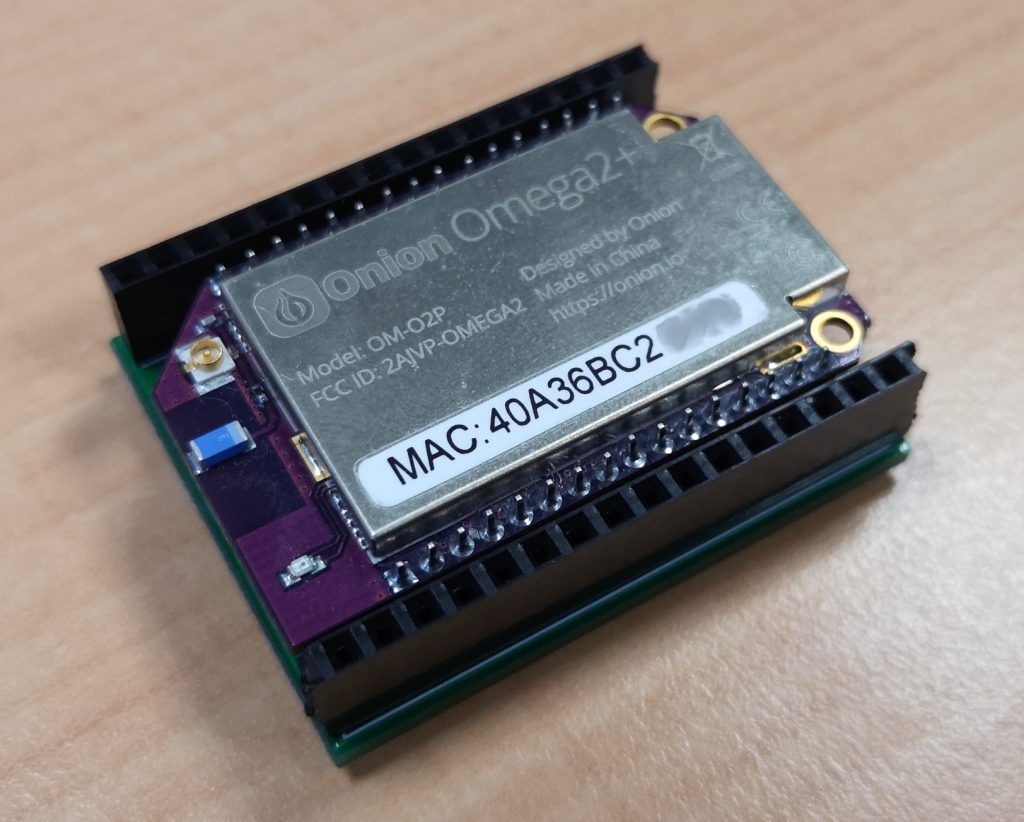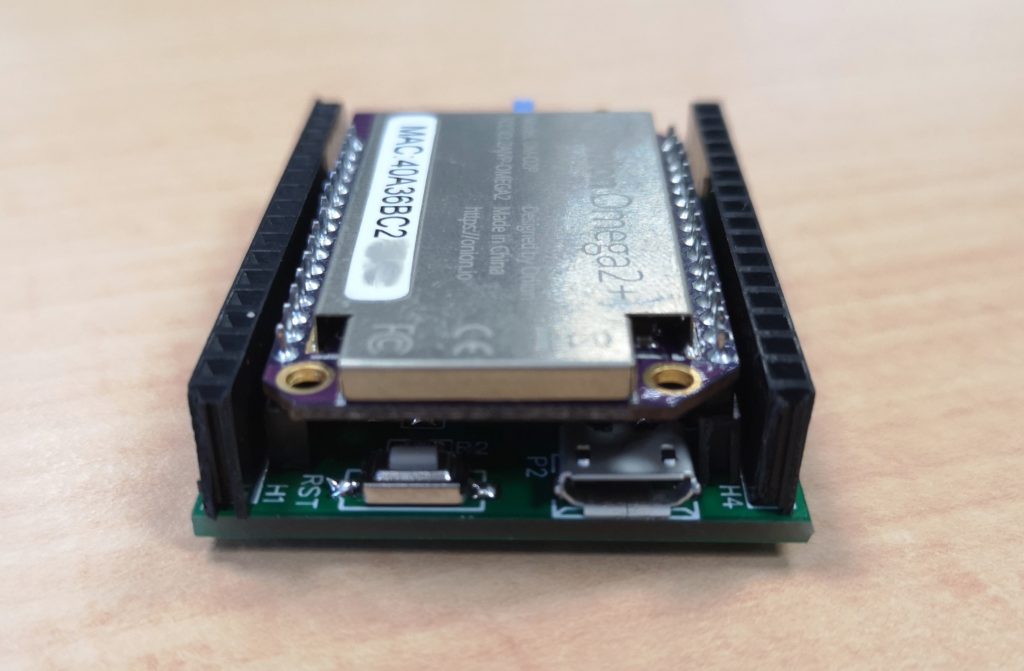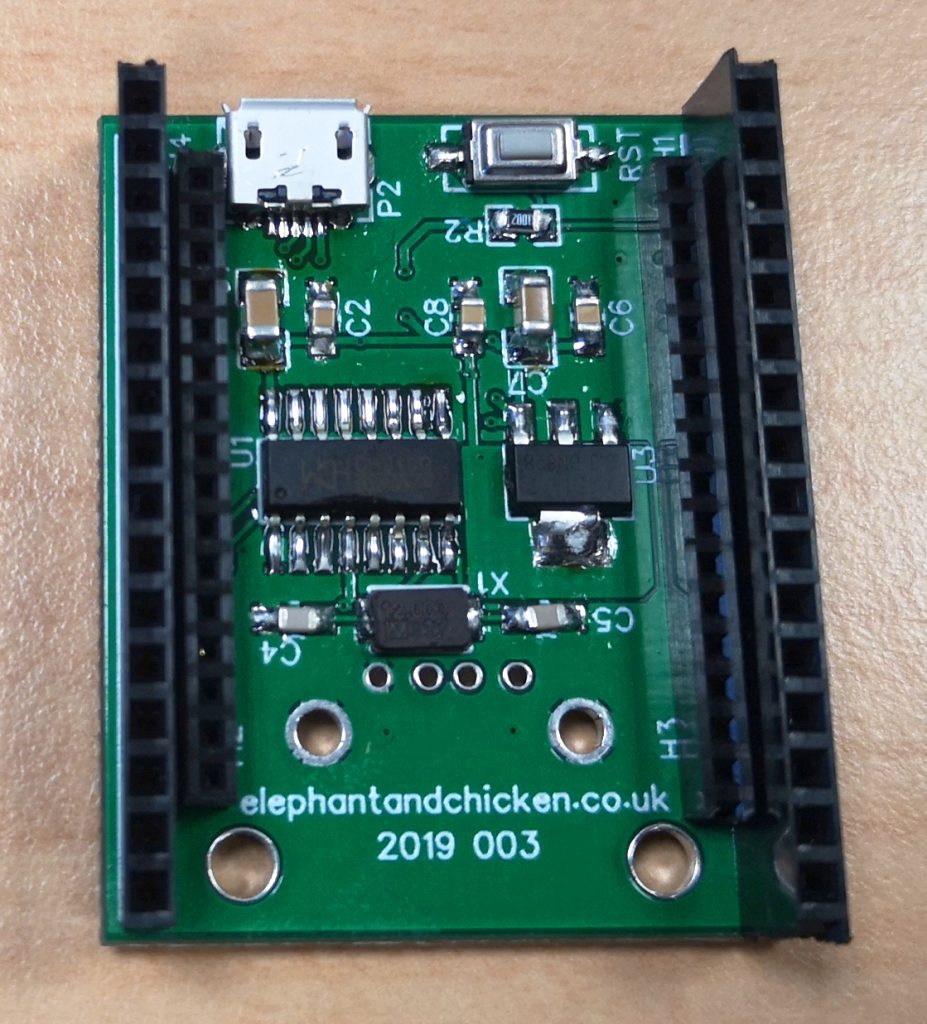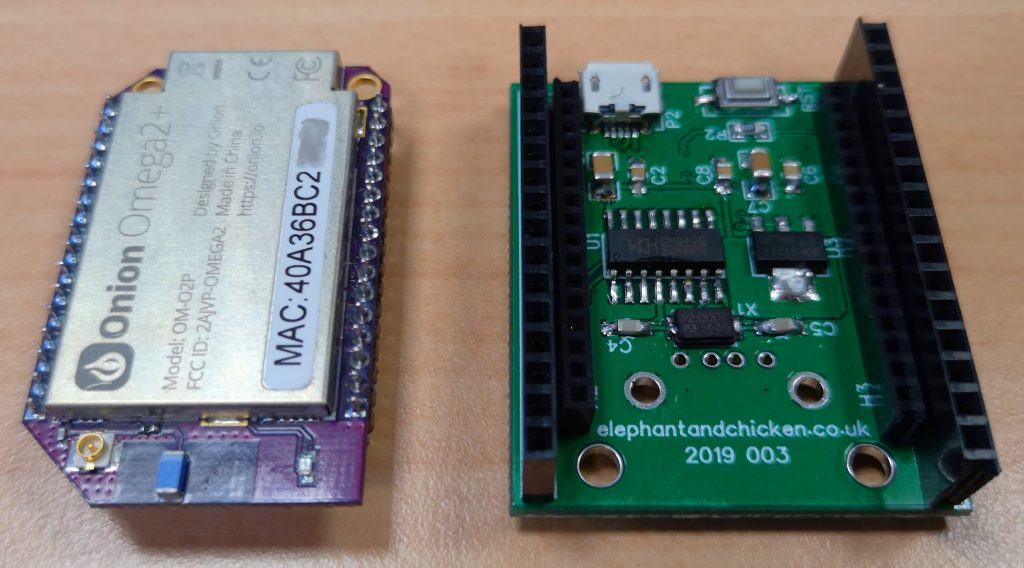
The Onion Omega2 is a small Linux computer, which sits in power and use somewhere between an Arduino and a Raspberry Pi.
There are two versions of the board (as well as other older and newer similar boards produced by Onion), the standard Omega2, and the Omega2+. Specifications are as follows:
- 580MHz Processor
- 64MB RAM (128MB on 2+)
- 16MB Flash Storage (32MB on 2+)
- MicroSD Slot (2+ only)
- b/g/n Wi-Fi
- 18 GPIOs (2x PWM, 2x UART, I2C, SPI, I2S)
- Linux OpenWRT
Originally advertised as a $5 computer, it doesn’t seem possible to buy the Omega2 for anything near this price now, but it is still an interesting device, made worthwhile by the comprehensive and well written documentation. In the UK, the best price I have seen for the board so far is at cool components, where the Omega2 can be bought for £9.98, and the Omega2+ for £11.99 currently (excluding postage). It is probably worth splashing out the extra for the Omega2+ as that extra flash and RAM will come in useful.
While the boards themselves are fairly affordable, I was disappointed to find the breakout boards, basically a requirement for using the Omega2, are extremely expensive for what they are. Further to this, the pin pitch on the Omega2 is 2mm… meaning it is not possible to use them directly with standard 1/10″ protoboard. I anticipate that this is where Onion actually make their money. The cheapest I’ve been able to find a board is about £16 for the board which only provides a USB interface. Other boards with more interfaces are £20 and up.
This gave me an idea, and I decided to get some boards made myself. While I like the compact nature of their smallest board, I was disappointed that it offered no way to connect your own projects through GPIO. My requirements were as follows :
- The board should provide a USB port for power, as well as serial debugging.
- The board should provide access to all GPIO connections with a standard pin spacing.
Additionally, I included the pads for a USB host port on the board, since the connections were there and I had the space. The result was as follows…
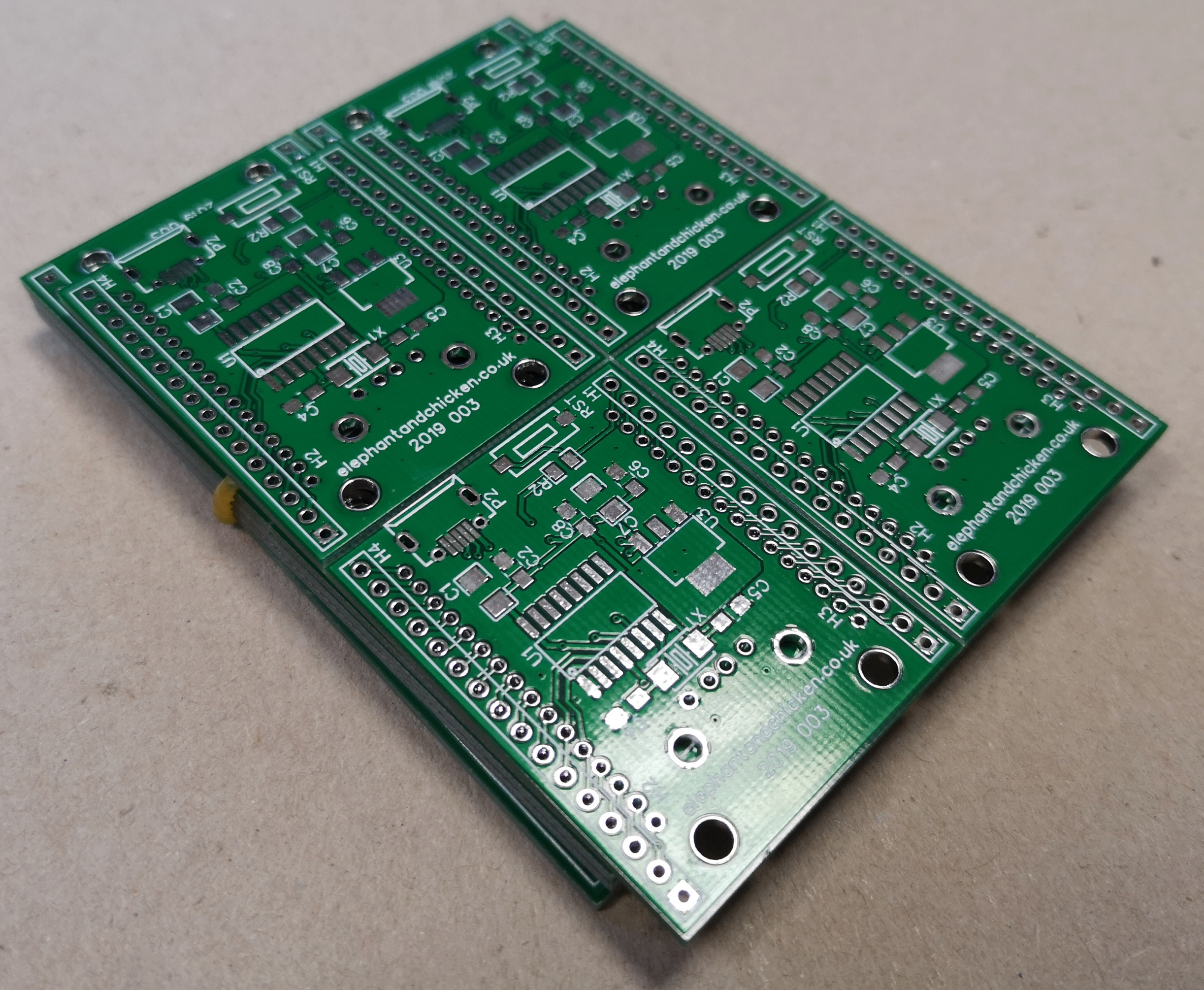
The boards can either be fully populated to give a USB debug / power connection with voltage regulation down to the required 3.3V, or if only the two pairs of headers are attached, they function as basic breakout boards, suitable for wiring into projects using Dupont wires. I have not used the USB host port yet as clearance to the Omega 2 itself (thankfully noticed before I ordered the boards!) is limited enough that I needed to place the USB host port on the underside of the board, preventing the board from sitting flush on the table.
As a simple breakout board :
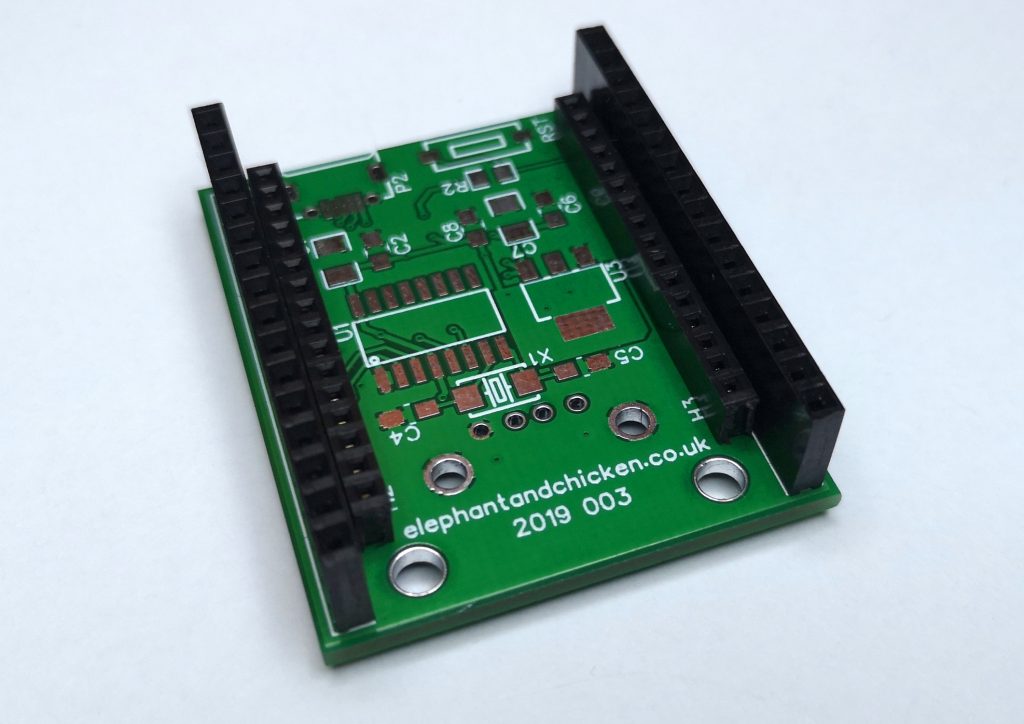
Omega2 Breakout 01 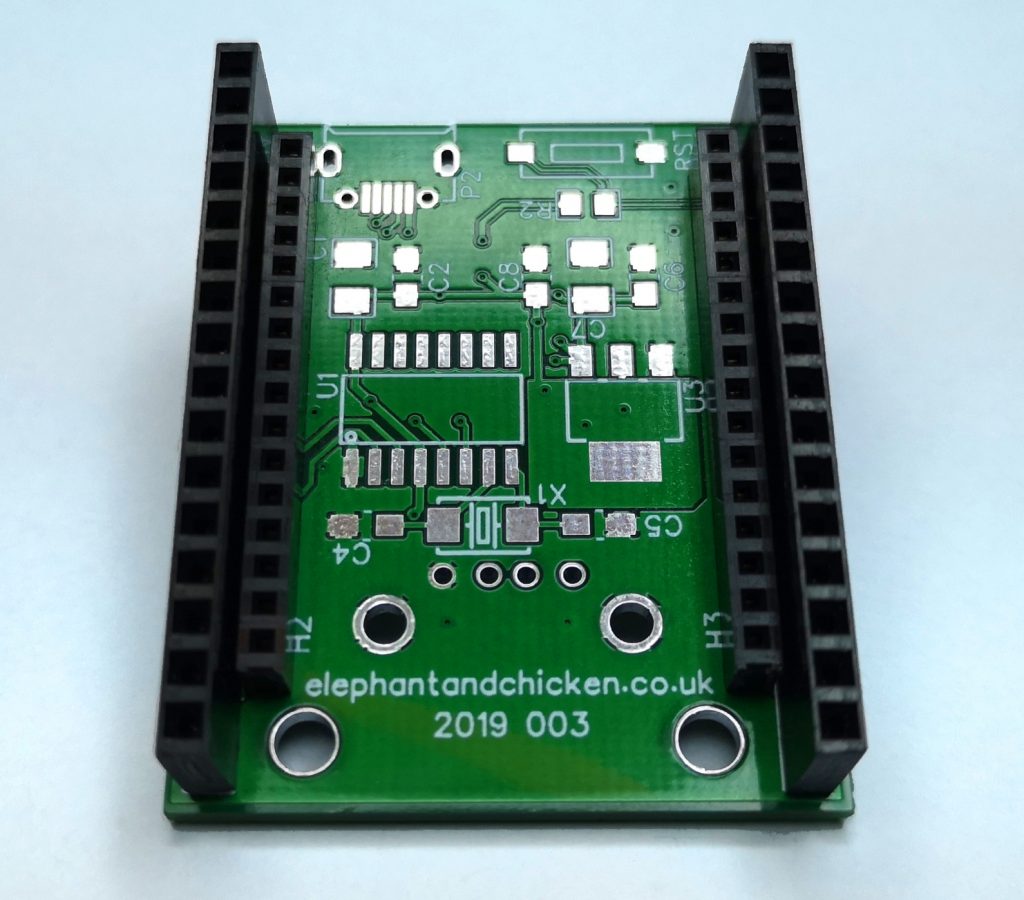
Omega2 Breakout 02 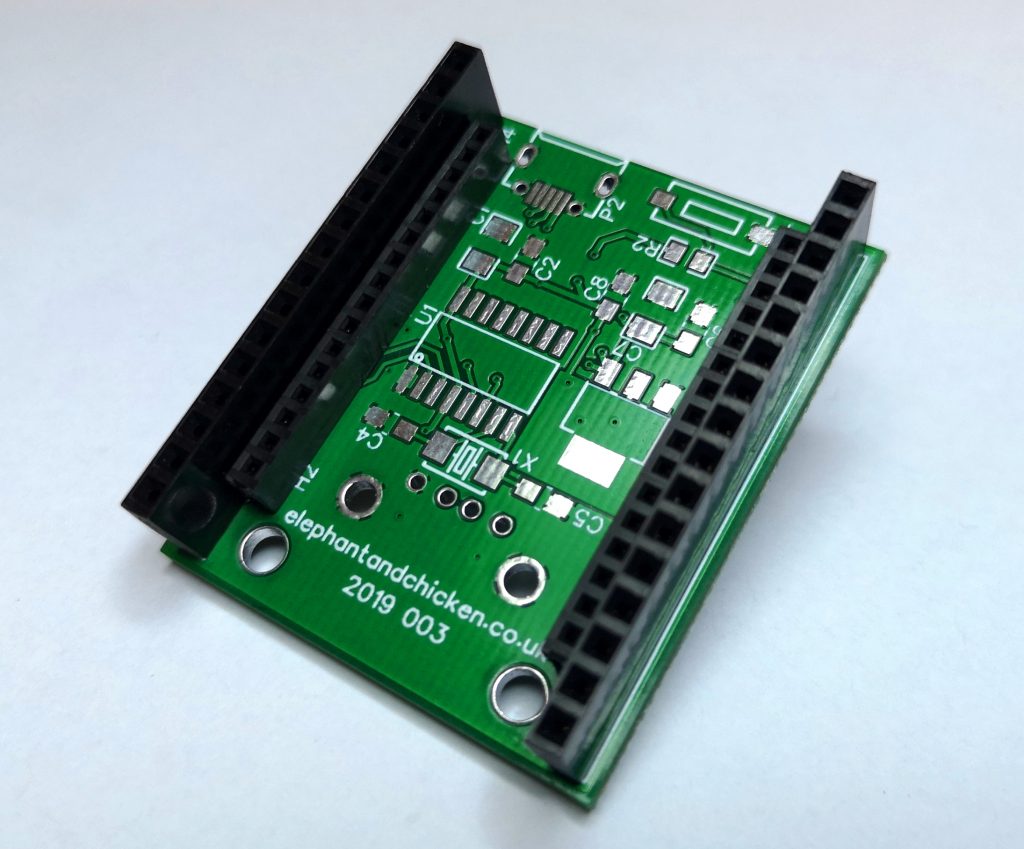
Omega2 Breakout 04 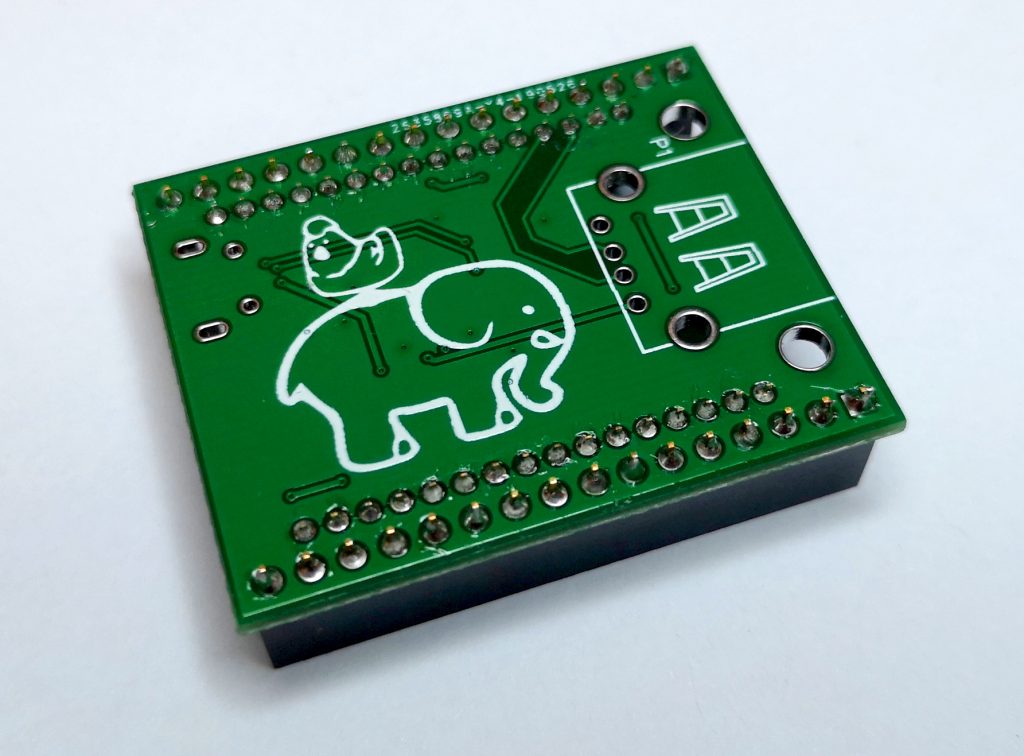
Omega2 Breakout 05 
Omega2 Breakout 06 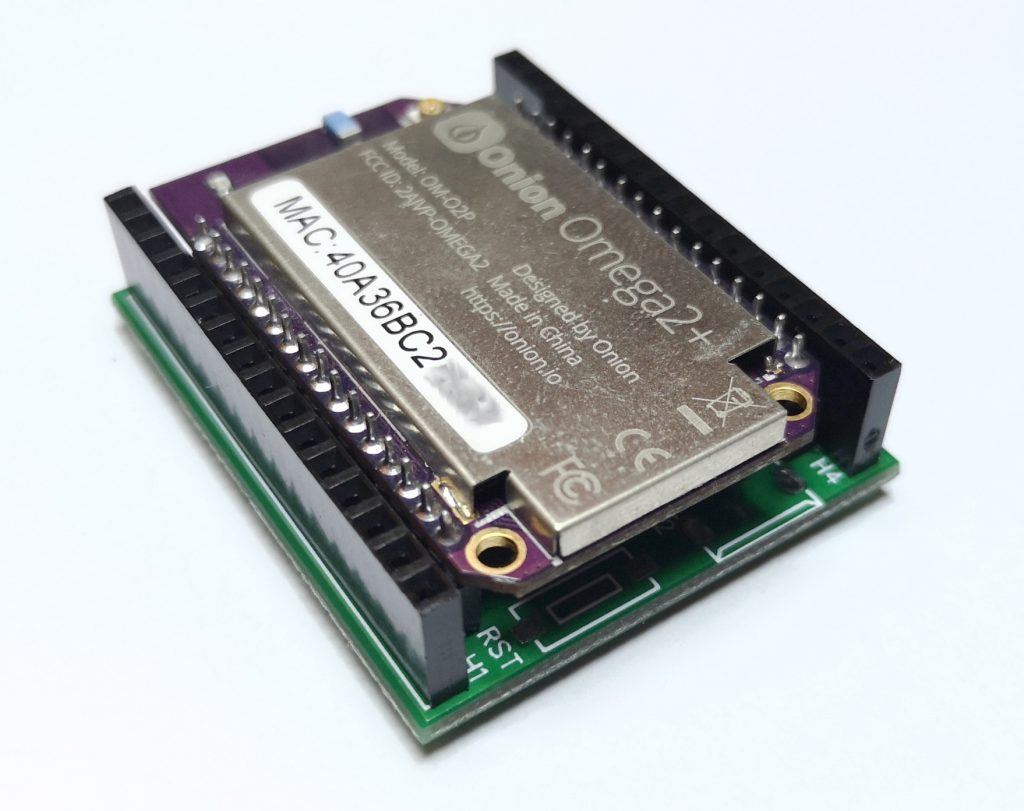
Omega2 Breakout 07 
Omega2 Breakout 08
As a USB interface / voltage regulator :
